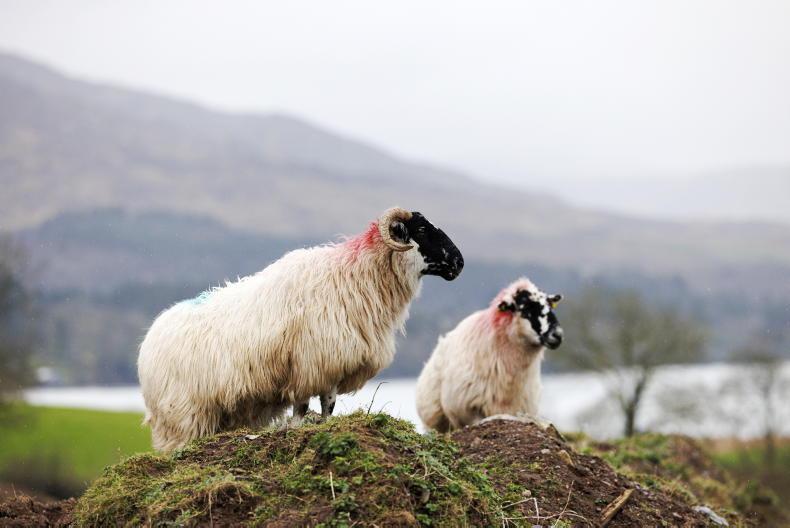While farmers and advisers are still acquainting themselves with the workings of the Results-based Environment-Agri Pilot (REAP) scheme, initial reports suggest there is a high level of interest.
A high percentage of the queries surfacing to date regard how likely an application is to be accepted into the pilot scheme.
This is because it has a maximum capacity of 2,000 participants and farmers are querying how the scoring card for the main measures will be handled.
Applicant groupings
An underlying aim highlighted in the terms and conditions of the pilot scheme is to deliver a geographic spread of participants.
The Department says the purpose of this aim is to satisfy what it describes as one of the key objectives - building capacity of advisory services.
The terms and conditions also state “the Minister may reject applications or require them to be varied if, in his opinion, they are not likely to contribute to the objectives of the project”.
The Department of Agriculture has also split applications into two groupings.
This is to ensure that there is an appropriate spread of enterprises to test the scorecards available in the pilot.
Group one is classified as farmers who recorded a whole-farm stocking rate in excess of 140kg organic N/ha (prior to exports) in 2019, while group two is farmers who had a whole-farm stocking rate of less than or equal to 140kg organic N/ha (prior to exports).
Selection criteria
In the event of REAP being oversubscribed and in addition to the criteria outlined above, these groupings will be used to determine priority ranking.
The overall number of applications in each grouping will be counted and applications will be selected in proportion to the overall number of applications within each group.
For example, if there is 80% of applications in group one, then 80% of approvals will issue to farmers in that grouping.
Within each grouping, there are three selection criteria which will be used to rank applications within a group.
The criteria listed below are the same across each grouping and 25 marks is allotted to each.
Farm holding intersection with high status water area or low water status area.Proportion of Natura Land on holding. Proportion of Areas of Natural Constraint (ANC) land on holding.In contrast to the 2019 stocking rate being used to establish the groupings, the information used for the selection criteria will be based on 2020 farm holding information.
We are still awaiting information as to what source of information is being used to determine the water areas which are included and their status.
Read more
REAP opens with a 20-day window for applications
While farmers and advisers are still acquainting themselves with the workings of the Results-based Environment-Agri Pilot (REAP) scheme, initial reports suggest there is a high level of interest.
A high percentage of the queries surfacing to date regard how likely an application is to be accepted into the pilot scheme.
This is because it has a maximum capacity of 2,000 participants and farmers are querying how the scoring card for the main measures will be handled.
Applicant groupings
An underlying aim highlighted in the terms and conditions of the pilot scheme is to deliver a geographic spread of participants.
The Department says the purpose of this aim is to satisfy what it describes as one of the key objectives - building capacity of advisory services.
The terms and conditions also state “the Minister may reject applications or require them to be varied if, in his opinion, they are not likely to contribute to the objectives of the project”.
The Department of Agriculture has also split applications into two groupings.
This is to ensure that there is an appropriate spread of enterprises to test the scorecards available in the pilot.
Group one is classified as farmers who recorded a whole-farm stocking rate in excess of 140kg organic N/ha (prior to exports) in 2019, while group two is farmers who had a whole-farm stocking rate of less than or equal to 140kg organic N/ha (prior to exports).
Selection criteria
In the event of REAP being oversubscribed and in addition to the criteria outlined above, these groupings will be used to determine priority ranking.
The overall number of applications in each grouping will be counted and applications will be selected in proportion to the overall number of applications within each group.
For example, if there is 80% of applications in group one, then 80% of approvals will issue to farmers in that grouping.
Within each grouping, there are three selection criteria which will be used to rank applications within a group.
The criteria listed below are the same across each grouping and 25 marks is allotted to each.
Farm holding intersection with high status water area or low water status area.Proportion of Natura Land on holding. Proportion of Areas of Natural Constraint (ANC) land on holding.In contrast to the 2019 stocking rate being used to establish the groupings, the information used for the selection criteria will be based on 2020 farm holding information.
We are still awaiting information as to what source of information is being used to determine the water areas which are included and their status.
Read more
REAP opens with a 20-day window for applications










SHARING OPTIONS